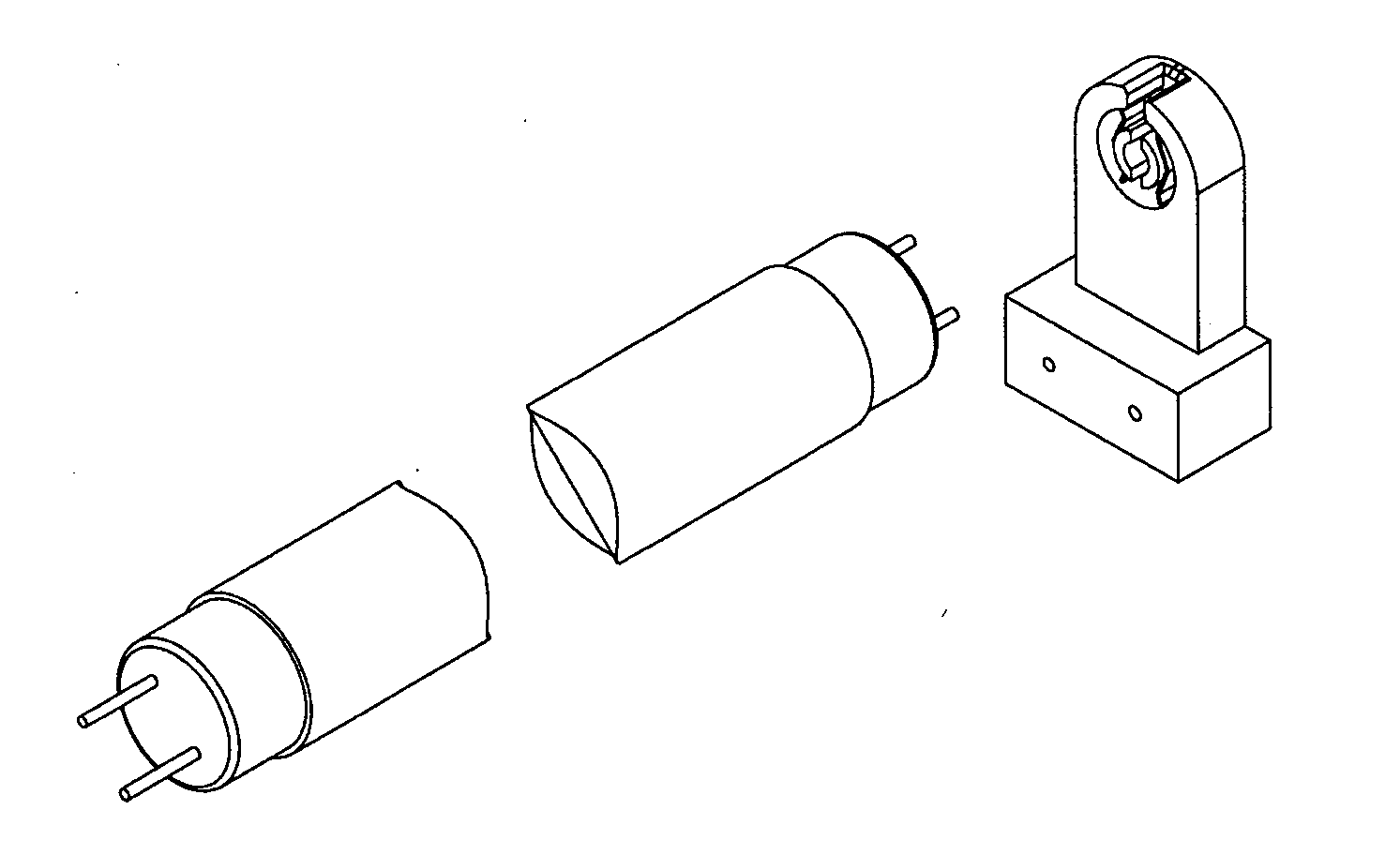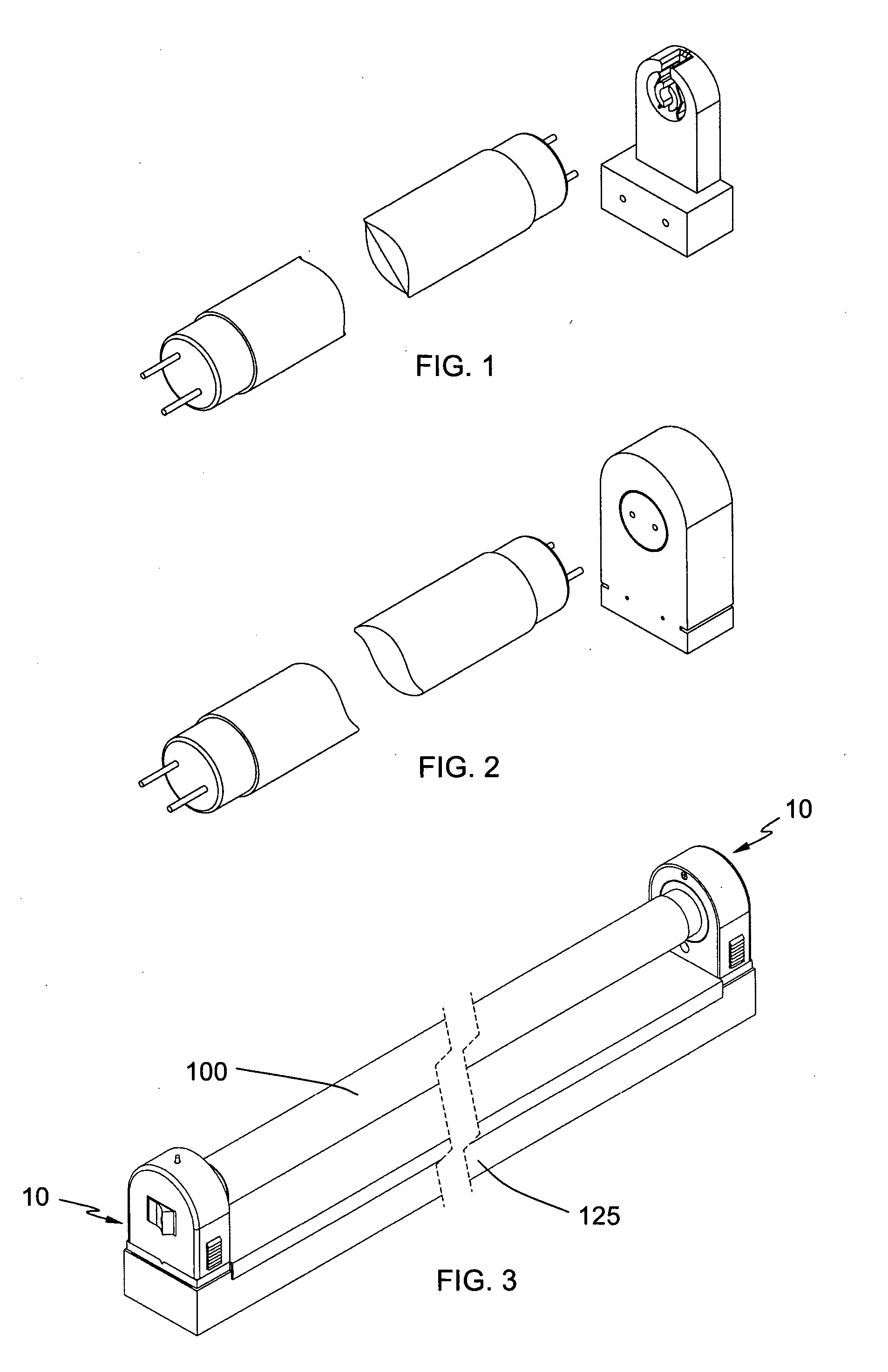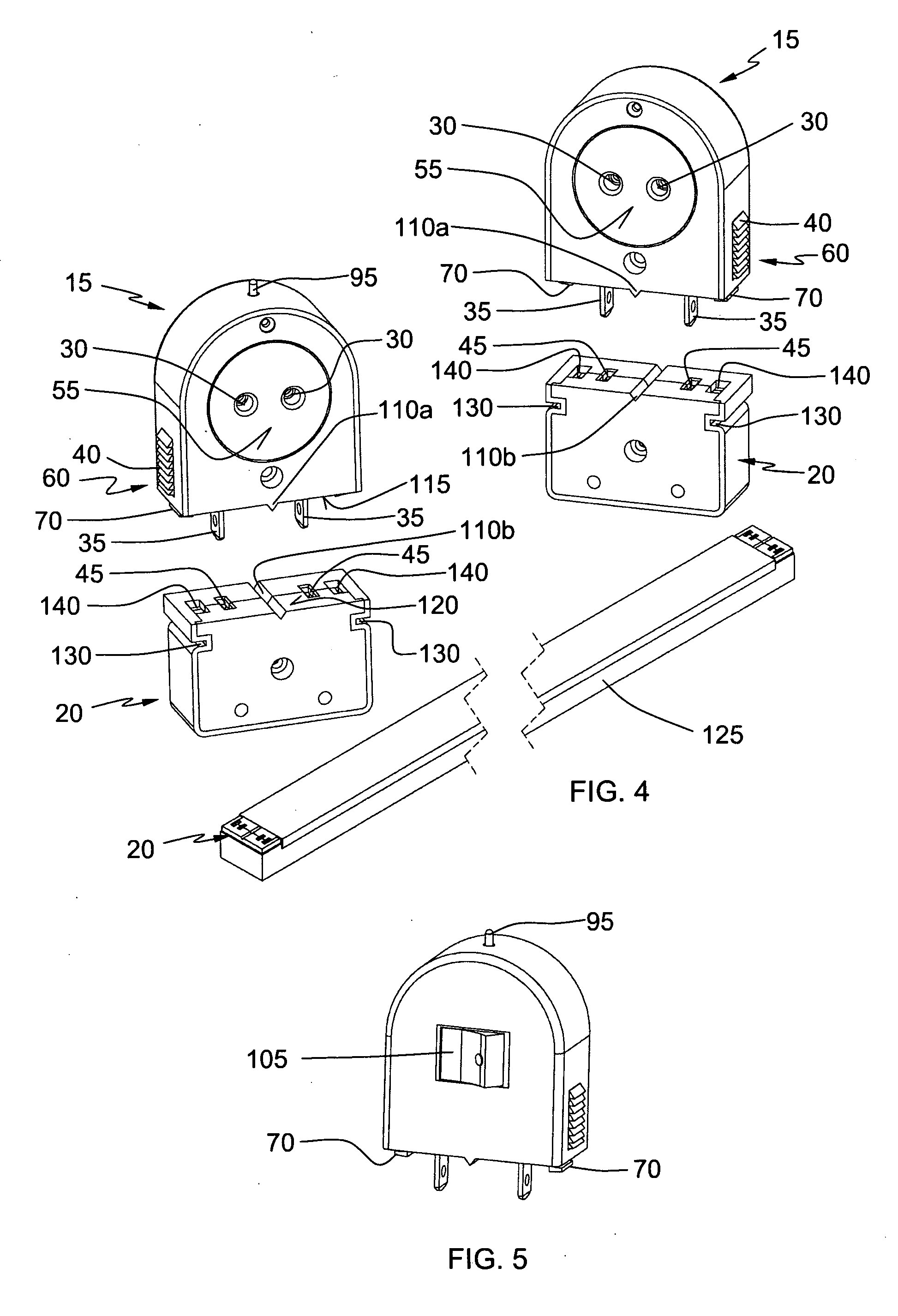Fluorescent lamp holder assembly
a fluorescent lamp and assembly technology, applied in the field of electrical engineering, can solve the problems of loosening from the socket, difficult installation or replacement of the lamp, and difficulty in special cases, and achieve the effects of improving the retaining force, simplifying design and assembly, and robust construction
- Summary
- Abstract
- Description
- Claims
- Application Information
AI Technical Summary
Benefits of technology
Problems solved by technology
Method used
Image
Examples
first embodiment
[0044]FIGS. 3 to 5 show the lamp holder assembly according to the invention.
[0045]As can be seen, the fluorescent lamp holder assembly 10 comprises generally a lamp holder 15 and socket 20.
[0046]The lamp holder 15 has a body which houses a pair of electrical terminals and a pair of openings 30 leading to the electrical terminals on the wall 55 of the lamp holder 15 on which the fluorescent lamp 100 is to be plugged in. Further, the lamp holder 15 has a pair of parallel spaced-apart protruding legs 35 of which one end is connected to the terminal and the free end protrudes from the body in the direction of the socket 20.
[0047]On the other hand, the socket 20, which is fixed to the lighting fixture 125 via lateral recesses 130 guided in corresponding rails in the lighting fixture 125, also has a pair of spaced-apart electrical terminals. As it is apparent to the skilled person, the lateral recesses 130 are one of the several ways of attaching the socket 20 to the lighting fixture 125 ...
third embodiment
[0058]FIGS. 15 and 16 show the lamp holder assembly 10 of the invention. Again, almost all the features have already been explained before. However, in this case the lamp holder 15 is provided with rounded cross section legs 35. This solution provides a robuster construction of the holder 15 and thus increases the durability of the lamp holder assembly 10. On the other hand, FIG. 16 shows that the socket 20 of this embodiment comprises insertion inlets 45 adapted to receive both flat and rounded cross section holder 15 legs 35. In this way production and logistic costs can be noticeably reduced, because one single socket 20 serves for different holder types.
[0059]Finally, FIGS. 17 and 18 show a further embodiment of the lamp holder assembly 10 of the invention. In this case, further to the general features already explained in FIGS. 4 to 6B, the lamp holder assembly 10 has the two operable cantilever arms 65 pivotally arranged on the side walls 135 of the holder 15 with a side proje...
PUM
 Login to View More
Login to View More Abstract
Description
Claims
Application Information
 Login to View More
Login to View More - R&D
- Intellectual Property
- Life Sciences
- Materials
- Tech Scout
- Unparalleled Data Quality
- Higher Quality Content
- 60% Fewer Hallucinations
Browse by: Latest US Patents, China's latest patents, Technical Efficacy Thesaurus, Application Domain, Technology Topic, Popular Technical Reports.
© 2025 PatSnap. All rights reserved.Legal|Privacy policy|Modern Slavery Act Transparency Statement|Sitemap|About US| Contact US: help@patsnap.com



